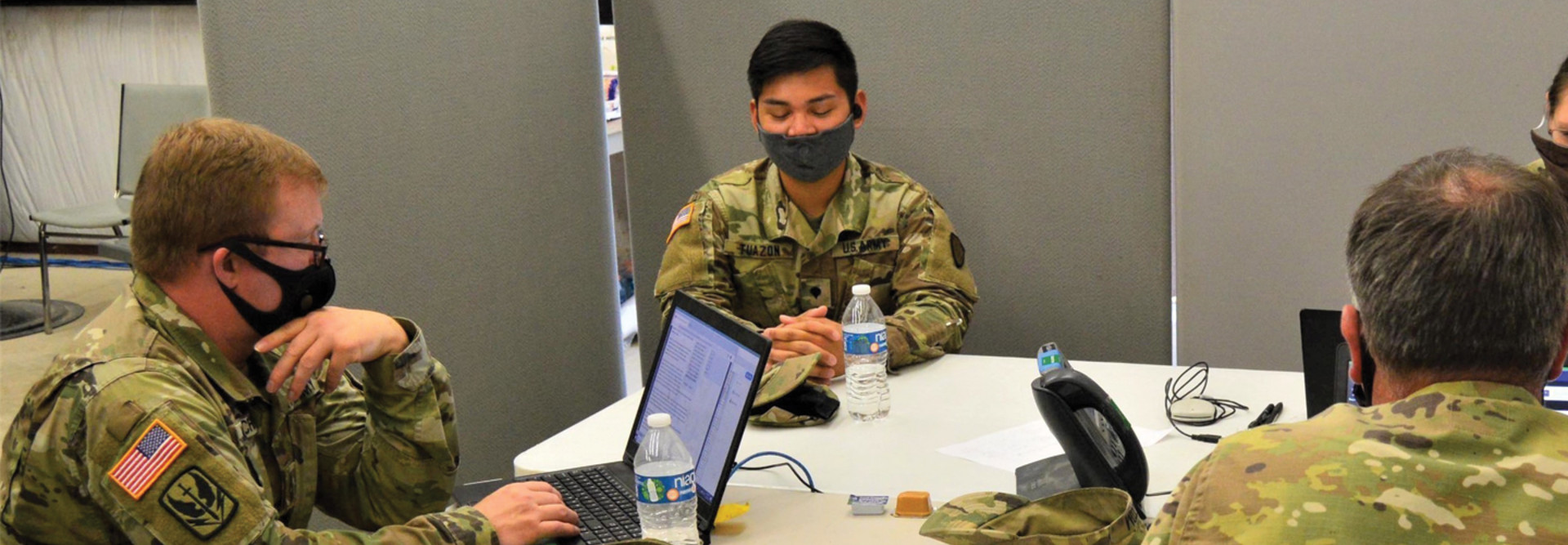How the Army Adapted to Telework
The Army was able to quickly adopt the new collaboration tools in CVR and Teams, which Crawford takes as a key positive development following the onset of the pandemic.
“I think the COVID-19 environment actually created some opportunities to accelerate some of the ideas that we had and to rapidly accelerate the rollout of capabilities,” he tells FedScoop, calling the pandemic the “new normal” or the “new now.”
The Army was able to demonstrate “flexibility to be able to expand that quickly” during the early days of the pandemic, and Crawford expects that those capabilities will survive past the pandemic. DOD CIO Dana Deasy has said as much about the wider Pentagon. “There will be some permanency to what we have here, specifically, more on the network side, and we will also have to create a base of teleworking equipment, which we will have to in some cases reuse,” he said in April. “Yes, there is going to be an enhanced teleworking capability that will be sustained at the end of COVID-19.”
The Army has used technology to achieve its mission, but the pandemic has shown how vital some tools are. As Crawford tells FedScoop, “[T]he ability to rapidly apply that technology — who knew three-and-a-half months ago the power of a capability like [Microsoft] Teams or a capability like WebEx or some of the other collaboration tools?”
“One of the big takeaways for me back to the importance of collaboration tools … there is no substitute for the ability to look in the eyes of those you lead,” he says.
MORE FROM FEDTECH: Discover how to prepare technology in advance of a virtual meeting.
The soldiers and civilians of the First Army’s Information Management Directorate have been among the people who have helped the Army ramp up its capability. Jeff Blankchaffin, chief of the directorate’s information services division, tells Defense Visual Information Distribution Service that the shift to telework presented challenges for the Army.
“The biggest challenge had been getting everybody up on the collaborative tools like Skype, Microsoft Teams and Defense Collaboration Services, and making sure everybody had the right equipment like speakers and microphones and everything that they need,” he says.
However, those obstacles were surmounted fairly quickly. “We’re at a steady state right now. Everybody seems to be working,” Blankchaffin says. “I don’t get any reports of anybody having issues with those tools anymore.”
Various components of the Army were able to adapt on the fly. Training and Doctrine Command — which focuses on training, recruiting and education organization — was “able to rapidly transition from in-person training and in-person recruiting to be able to tap into the virtual world and the virtual capabilities … to rapidly pivot to leveraging online training to continue the mission,” Crawford tells FedScoop.
“They were able to leverage the enterprise network rapidly to quickly innovate and quickly adapt and they have not missed a beat,” he says.











